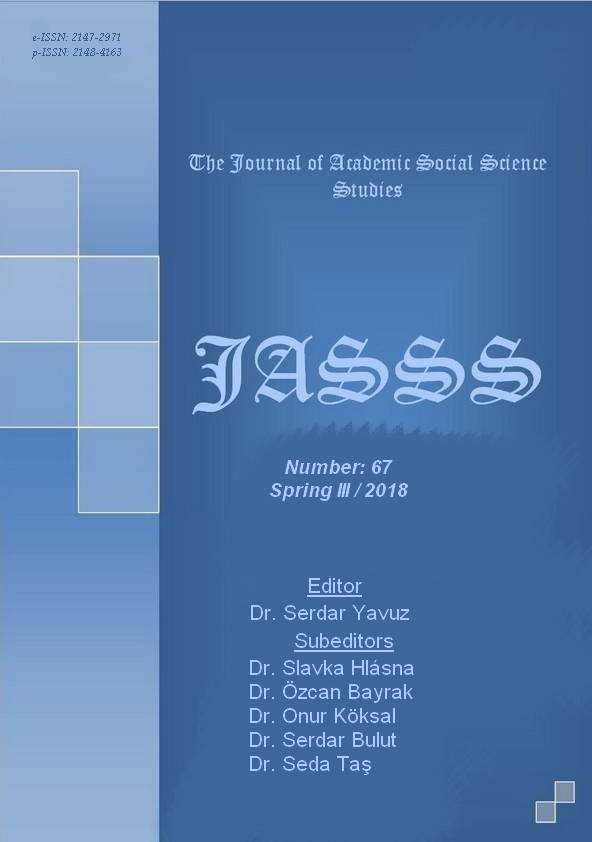Author :
Abstract
Tiyatronun yokluğundan doğan boşluk illüstrasyonun sahne performansını kitaba çağırmasıyla, iki farklı ve uyumlu medyayı yani kitap ve sahneyi bir araya getirmiştir. Olayların ve anların yeniden canlandırılması, tarihsel belge olma özelliği gibi amaçlarla izleyiciyi olayın bir parçası haline getiren tiyatro illüstrasyonları, oyun ve sahne arasındaki geleneksel ilişkiyi kesmesine yönelik yaygın endişeye rağmen, tiyatronun geleneklerine dayanan bir ortamı pekiştirmek için türünün önemli örneklerini vermiştir. Bu illüstrasyonlar, izleyicinin dünyasına, çağına ve algısına geçici olmayan örnekler sunmakla kalmamış, başlı başına sanat eserine dönüşmüştür. Zamanın içinden zamanın anlayışı ve gelenekleriyle günümüze gelen bu örnekler hem tiyatronun toplumsal yaşantıda varoluş nedenini hem de illüstrasyonun kitapta varoluş nedeninin bir araya gelişinin tesadüfi olmadığını gösterir niteliktedir. Çünkü performans illüstrasyonları, şimdiyi temsil etmek yerine tiyatro performansını başka bir evrende yeniden sunmayı hedefleyerek tiyatral olayı kalıcı bir noktaya taşır. Bu sayede oyunun kurmaca yapısı saklanabilir, kaydedilebilir ve belgelenebilir bir boyut kazanır. İllüstrasyon bu görsel gücü nedeniyle izleyiciyi olayın bir parçası haline getirerek başka bir evrende yolculuğuna devam etme olanağı sağlamıştır. Bu araştırmada illüstrasyonun tiyatro sahnesi ile buluşmasına neden olan süreç, performans-illüstrasyon arasındaki ilişkinin gelişimine zemin hazırlayan nedenlerle birlikte başlangıcından günümüze kadar tarihsel bir dizgede incelenmiştir. Ayrıca bu çalışmada sahne performansını kitaba çağrılan sanat olarak tanımlanan illüstrasyonun, kültürlerle buluşması ve her kültürde sınırsız anlatım olanaklarıyla eşsiz esrelere dönüşüm serüveni örneklerle birlikte ele alınmıştır.
Keywords
Abstract
The gap arising from the absence of the theatre brought together two different but harmonious media, the book and the scene, with the help of illustration inviting the theatre performance to the book. Despite widespread concern over breaking the traditional relationship between the play and scene, theatre illustrations, making the audience a part of the event with the purpose of reviving events and moments, and with the feature of being a historical document, have given important examples of the tradition to reinforce the environment based on the traditions of the theatre. These illustrations are not only the ones presenting non-temporal examples to the audience’s world, age, and perception but also transformed into unique works. These examples which came to these days day by day with the understanding and traditions of the time prove that both the reason for theatrical existence in social life and the reason for the inclusion of the illustration in the book are coincidental, because performance illustrations, rather than representing today, bring the theatrical event to a permanent point, aiming to reintroduce the theatre performance in another universe. At this point, the fictional structure of the play can be hided, recorded and documented. Because of this visual power, illustration enables the audience to continue his journey in another universe by making him a part of the event. In this research, the process leading to the meeting of the illustration with the theatre scene was examined chronologically with reasons for the development of the relationship between performance and illustration. Moreover, the study discussed the meeting of illustration, which was described as an art inviting the theatre performance to the book in this study, with the cultures and transformation of the illustrations to the unique works with unlimited expression possibilities in every culture.





